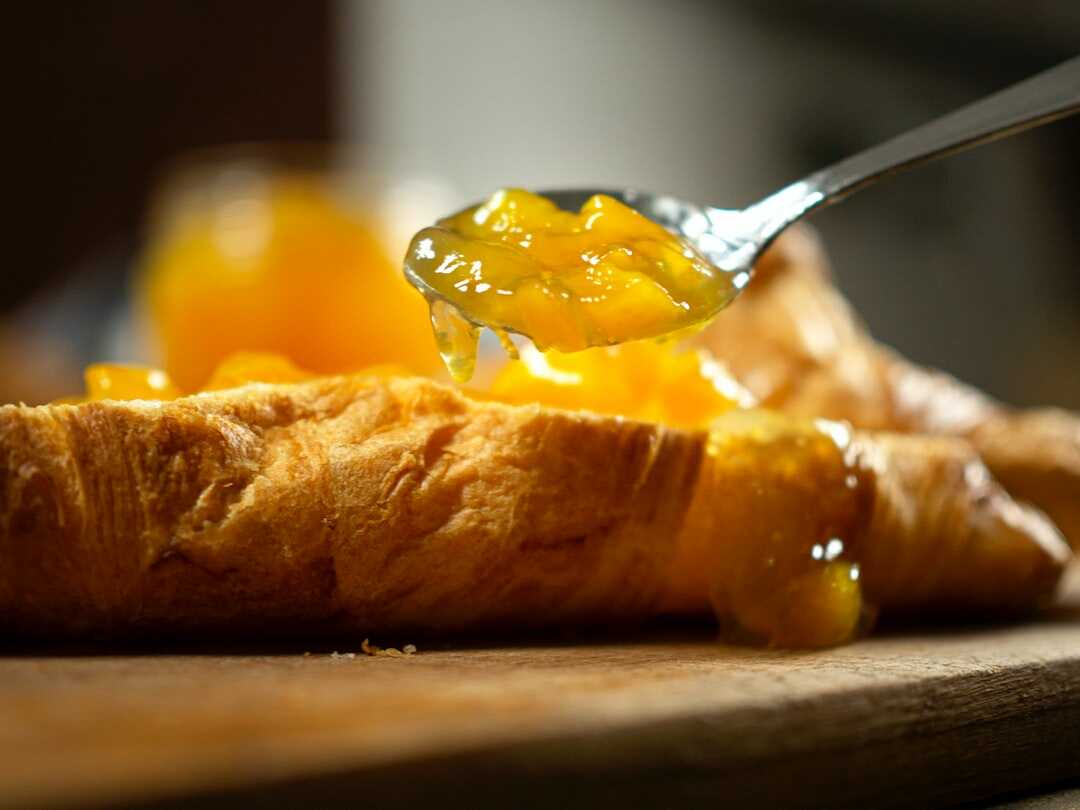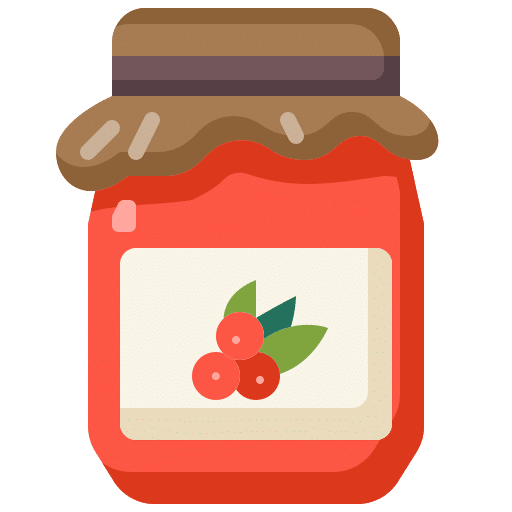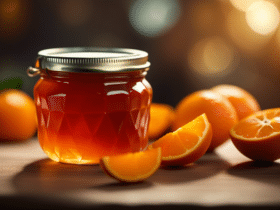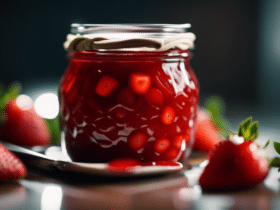Between 7 and 8 g of gelatin are needed to gel 1 liter of liquid. Rehydrate the leaves in cold water for a few minutes. When they are tender, squeeze them well, then melt them in another hot liquid.
What is the origin of gelatin?

& quot; jelly & quot; Latin & quot; gelatus & quot; it means & quot; frozen & quot;. It is an odorless, translucent, slightly yellowish substance consisting of collagen in bone and/or pig bone and skin skin. In France, 90% of the jelly is of porcine origin.
How to know the origin of gelatin? Most of this gelatin is of porcine origin: “In Europe, 80% of production comes from pig skins. 15% come from cowhides, and especially from the thin layer between the skin and the subcutaneous tissue and collagen.
Is gelatin halal? It is forbidden in Islam if the jelly comes from pork (the Koran forbids the consumption of this animal) or if other animals do not die according to Islamic rites (halal).
How do you make jelly? Gelatin is obtained by cooking collagen, the most abundant protein in mammals. Collagen is found in the skin, cartilage, muscles and bones of animals. The most common source is pigskin. It is also the most expensive.
How is vegetable gelatin made?

An alternative to animal gelatin is agar-agar, a gelling plant extracted from seaweed. Originally from Japan, it comes from the dehydration of certain types of red algae (Latin name Gelidium, family of floridae). Agar agar can replace animal gelatin.
How to make vegetable jelly? For 2 tablespoons of gelatin powder into 6 tablespoons of cold water. Leave for 5-10 minutes for the jelly to bloom. Meanwhile, heat 100 g of sugar and 1 liter of heavy cream in a saucepan that you will put in the gas stove.
What is the best jelly? The most recommended food jelly in confectionery recipes is 200 flowers. After several hours of rest, the jelly will add a creamy texture and a melting recipe. It has no smell or color and is perfectly digestible.
What is the difference between agar-agar and gelatin? The first difference is their nature. Indeed, the edible jelly is of animal origin. Transparent, odorless, it boils the skin or bones of animals, especially cow, pork or fish cartilage. Agar-agar, on the other hand, comes from a Japanese red seaweed.
Where is pork gelatin?

For the most part, this jelly is of porcine origin: & quot; 80% of production in Europe comes from pigskin. 15% comes from cowhides, and in particular from the thin layer of skin and subcutaneous tissue and contains collagen.
Where can I find pork jelly?
Is there pork jelly in Tagada? This is obtained from the skin of the animal. This is why it is surprising that in the sweets department of supermarkets, Haribo brand products are the only ones not to determine which gelatin comes from…
How is pork jelly made? Gelatin is a mixture of proteins obtained by the partial hydrolysis of collagen extracted from skin, such as pig skin (pork), bones, cartilage, etc. Then, the molecular bonds between the collagen fibers are broken.
How is edible gelatin made?

Collagen is obtained by long cooking, a protein present in the skin, cartilage, muscles and bones of animals (first washed in hot water, freed from meat waste then dried and treated with hydrochloric acid).
What is the origin of gelatin? The word “gelatin” comes from the Latin “gelatus”, which means “frozen”. It is a translucent, slightly yellowish, odorless substance made from collagen in the bones and skin of beef and/or pork. In France, 90% of the jelly is of porcine origin.
Is pork jelly? FOOD – Confectionery, low-fat yoghurts, cream cakes… gelatin is hidden in many ingredients. In 80% of cases, it comes from pigs. Millions of tons of animal hides, skins and bodies are processed in food processing plants every year.
How to use gelatin in a cold preparation?
To gel a cold preparation: soak the jelly and drain. Dissolve in a small saucepan over low heat. Add 1-2 tablespoons of the mass to the workpiece, then add this mixture to the preparation, stirring constantly. Leave to set in the refrigerator.
How to use the jelly? Gelatin is a gelling agent used in certain desserts which requires a device which thickens and solidifies in the cold. It can also be used to stabilize a dessert (especially mousses) that you want to keep longer than usual.
What temperature for jelly? Gelatin is usually added to a heated liquid, but not boiled. In fact, the ideal is to incorporate the jelly into a preparation between 50 and 90°C.
Video: How do you make gelatin?
How much Agar-agar for a sheet of gelatin?
Agar-agar is a more powerful gelling agent than conventional gelatin. It is usually found in powder form in 2 g sachets. Then count about ½ L to prepare the liquid. A 2 g sachet of agar contains approximately 3 sheets of gelatin.
Why is the agar-agar not placed? Several options. 1) The liquid is not boiled enough (it is between 10 and 30 seconds). 2) We used an acidic ingredient which slightly reduces the gelling power of agar: currant, lemon… Agar can be annealed by adding agar.
How to gel with agar? Agar-agar: cold start Agar-agar is introduced into a cold liquid. It dissolves very well without lumps, but you can mix it with sugar first to improve its solution. Bring the liquid to a boil and cook for 30 seconds. The mixture will freeze as it cools.
How to make pork gelatin?
This gelling and thickening protein is obtained by grinding the bones, skins and tendons of these animals, which are then heated for a long time in hydrochloric acid.
What to do when there is no jelly? Agar-agar, fruit pectin, starch or starch: natural alternatives to gelatin. Agar-agar: plant of 100% natural origin, gelling agent from Asian red algae. The store sells organic or Asian products, in the form of white powder, flakes, bars or filaments.
Why is gelatin not taken? Why doesn’t gelatin dissolve? The problem is that the gelatin does not melt completely, it remains in the form of a lump. Do you have any tips for diluting it? After soaking and draining in water, it must be microwaved in slices with a maximum power of 2 or 3 seconds.
Is gelatin good for health?
Treasures of benefits It is rich in proteins, collagen and amino acids for the proper functioning of the body, in particular to strengthen the bone structure and protect the cartilage of the joints affected by aging.
How to use gelatin for the joints? In seven days, the jelly should heal. At least that’s what the site promises. The miracle recipe is simple: 5 grams of jelly in fresh water, leave to swell overnight. The next day we receive an unappetizing jelly.
How to consume the jelly? Mix 2 tablespoons (10 g) with 100 ml of water, fruit juice or cold milk 2 times a day before meals. The drinking jelly can also be easily mixed with yoghurt, muesli, cheese and can be consumed for a long time.
How much jelly per day?
What are the properties of gelatin?
The many functional properties of gelatin give it a unique character. In particular, it is capable of gelling, thickening, stabilizing, foaming or binding water. 100% natural, gelatin is free of cholesterol, purine and fat.
How to drink jelly? GELATIN POWDER Mix 2 tablespoons (10 g) with 100 ml of water, fruit juice or cold milk 2 times a day 2 times a day before meals. The drinking jelly can also be easily mixed with yoghurt, muesli, cheese and can be consumed for a long time.
What is the role of gelatin? Today, this jelly is used as a thickener, stabilizer in confectionery, ice cream, yogurt, margarine, etc.
How to extract gelatin?
The standard process at the heart of gelatin manufacturing consists of several steps: clarification, fragmentation (by ultrafiltration technology), concentration by evaporation and sterilization.













